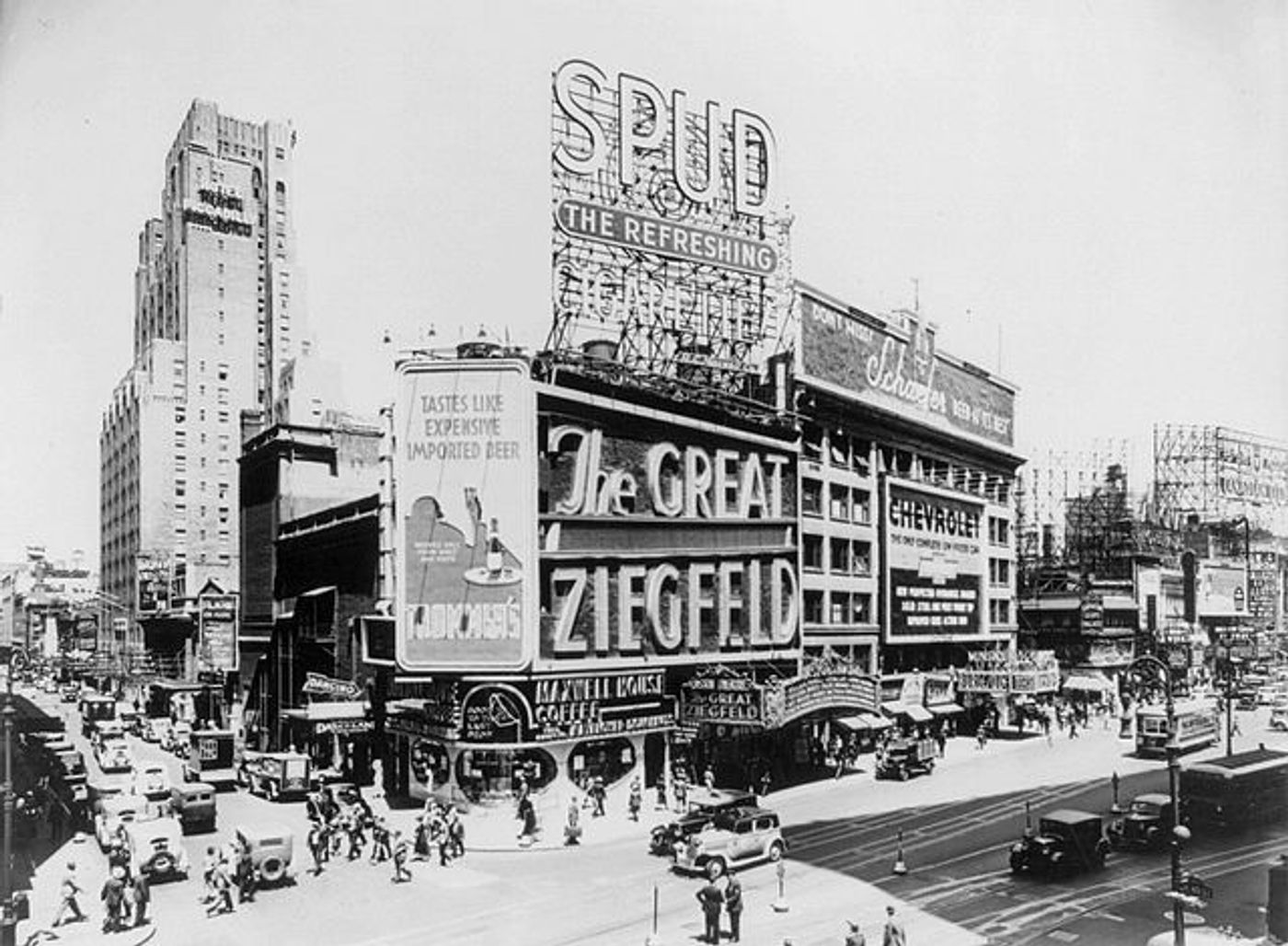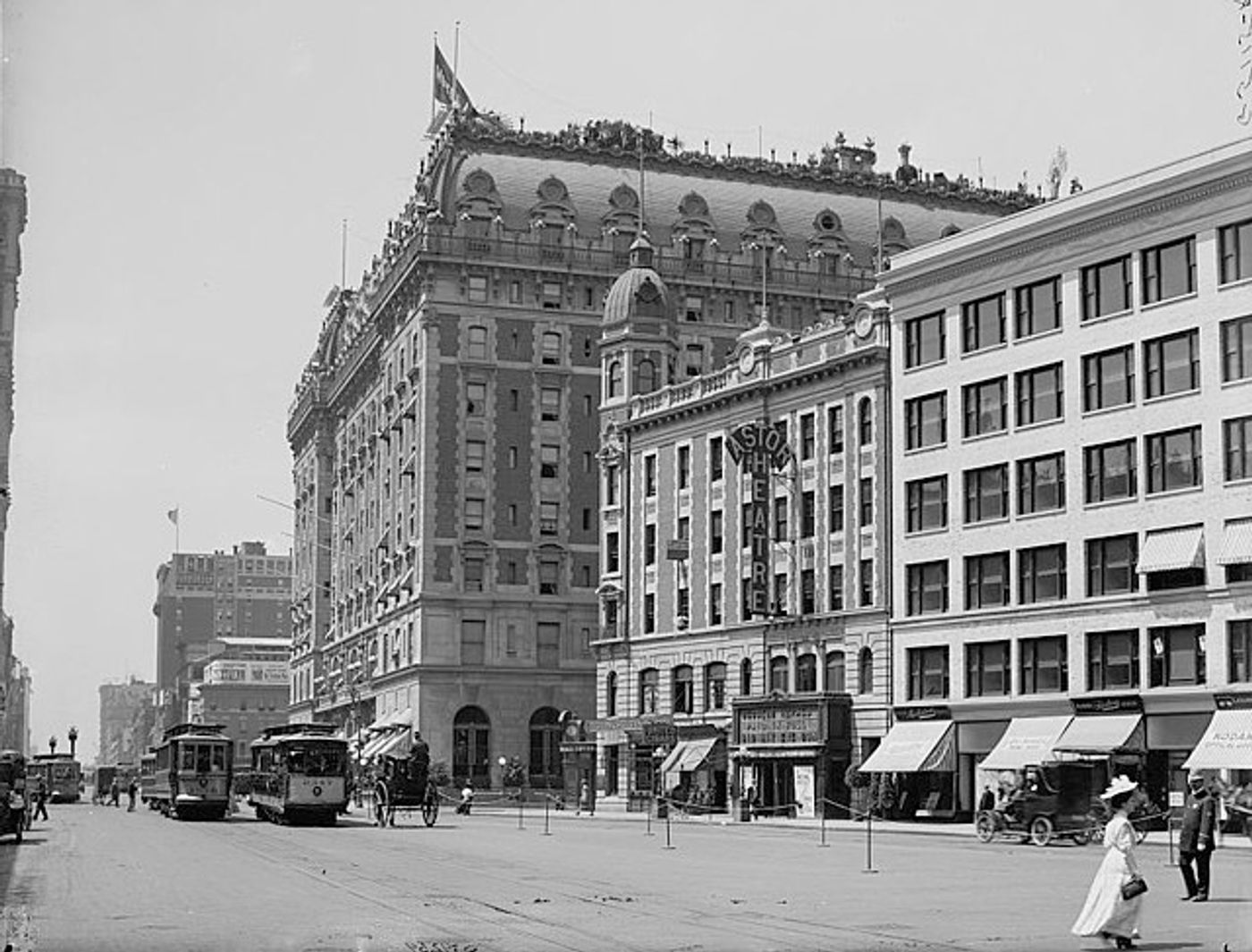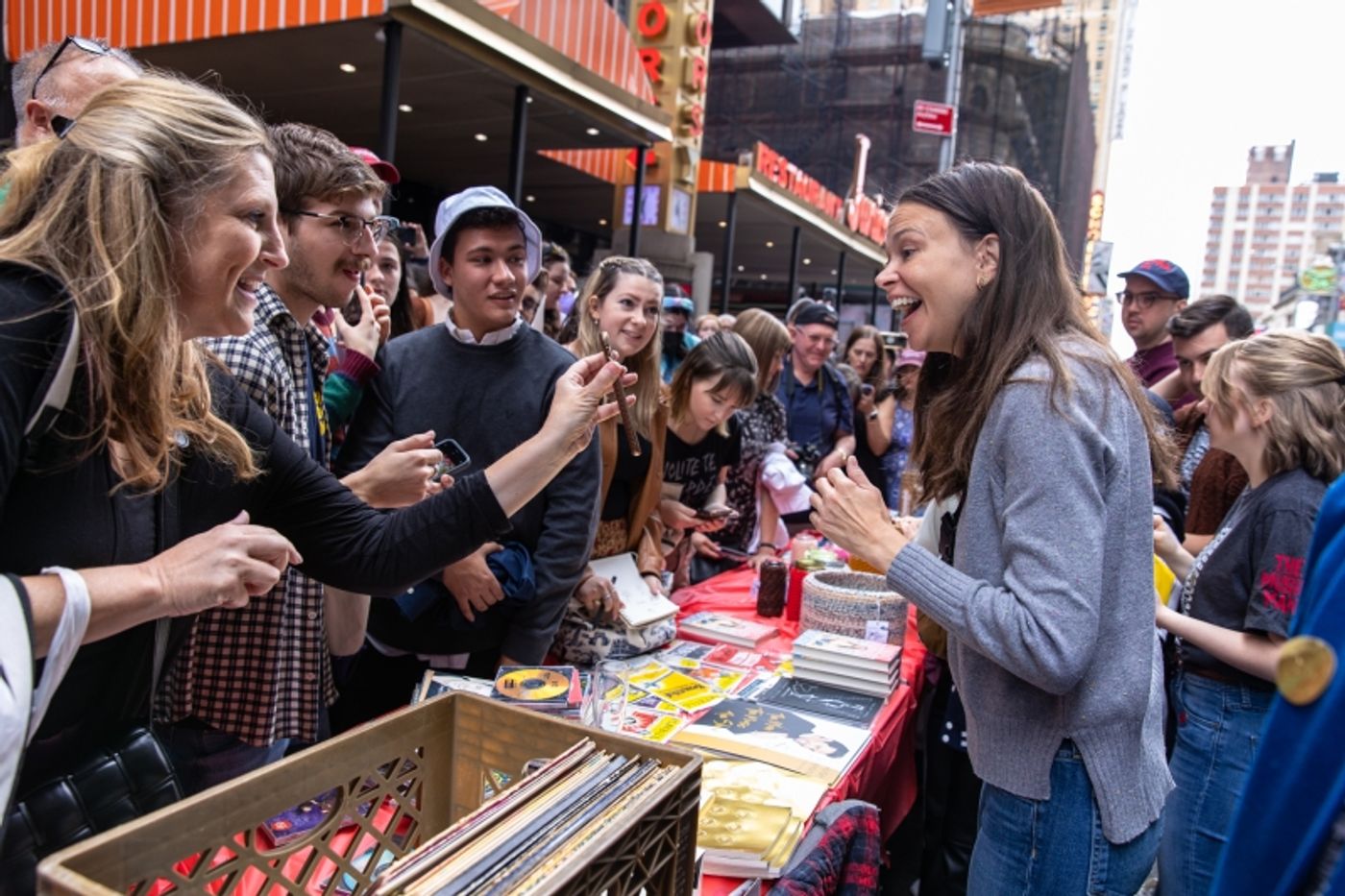What Is the History of Shubert Alley?
Jennifer Ashley Tepper Is answering your questions with Broadway Deep Dive!
Do you have a burning Broadway question? Dying to know more about an obscure Broadway fact? Broadway historian and self-proclaimed theatre nerd Jennifer Ashley Tepper is here to help with her new series, Broadway Deep Dive. Every month, BroadwayWorld will be accepting questions from theatre fans like you. If you're lucky, your question might be selected as the topic of her next column!
Submit your Broadway question in the comments here!
This month, the reader question was: What is the history of Shubert Alley?
To answer this reader question about the venerated theatre district thoroughfare known as Shubert Alley, we have to go back more than a century...
In 1905, The Hotel Astor opened in the heart of Times Square. The sparkling new building on Broadway between 44th and 45th Streets, with 1,000 guest rooms, was inspired by the dazzling Waldorf-Astoria Hotel to the east.
The Hotel Astor opened just as Times Square was being renamed from its original moniker, Longacre Square. The year before, the New York Times had moved their headquarters to 42nd Street, eliciting the name change.
Around the same time, 42nd Street was becoming a hub for subway and other mass transport, and Broadway theaters were beginning to center around the Times Square area. Our three oldest Broadway theaters, The Lyceum, New Amsterdam, and Hudson, all opened in 1903.
Times Square was becoming the place to be, the center of the theatre district, and The Hotel Astor was right at the heart of it. The opening of the Astor inspired other hotels to open in the Times Square area, just as the opening of the Lyceum, New Amsterdam and Hudson were partially responsible for inspiring more theatre builders to look to the area as a new hub.
The Hotel Astor would loom over Times Square from 1905 until 1967. In nearly every photo of Times Square during the first seven decades of the 20th century, the Astor Hotel is gleaming front and center. Show business folk frequented the Astor bar, and it was also a known meetup spot for the LGBTQ+ community. There was a palatial rooftop garden, an extensive wine cellar, and multiple glamorous ballrooms and restaurants.
In 1906, the Astor Theatre, one of the five houses that would eventually, in 1982, be demolished to build the Marriott Marquis hotel, was built, adjacent to the hotel. The venue was only a legit Broadway house until 1925, before spending most of its decades as a movie palace.

In 1913, both the Shubert and Booth Theatres were erected. Two of our most beloved Broadway houses to this day initially were built very close to the backside of The Hotel Astor. On 44th and 45th Street respectively, the back-to-back theaters both had one wall that led to an alley. Back in 1913, this alley was narrow, as The Hotel Astor's backside extended farther west than that of the current building in its place. Since the Shubert brothers built both the Shubert and the Booth Theatres, including offices for themselves above the Shubert, they were often seen in the narrow alley, and thus Shubert Alley was born. Lee Shubert's red and black limousine was frequently parked in the alley.
The purpose of the alley was partially to provide firefighting access to The Hotel Astor, Shubert, and Booth. The alley also allowed for the theaters to both be built on corner lots, and adhere to city building regulations.
In Shubert Alley's early days, actors would crowd around, just as vaudevillians did in front of the Palace Theatre, waiting to hear about shows that were auditioning, producers whose offices could be visited in order to be considered for a job, and to gather general word about potential work. Some producers would even meet with actors in the alley. The alley was frequented by Broadway fans seeking autographs and by paparazzi, because of this. The area of 44th and 45th Streets, between Broadway and 8th Avenue, is still considered the center of the theatre district, especially given the number of Broadway houses located on each block. But in the first half of the 20th century, this was especially true, as there were still more Broadway houses, from the Empire to Maxine Elliott's, just south of 42nd Street. So gathering in Shubert Alley in order to be ready to high tail it to any theater, or office above a theater (including The Shuberts' offices which were right there), made perfect sense.
Until 1945, there was a brownstone at the northern end of Shubert Alley that served as home to Frederick A. Muschenheim, operator of The Hotel Astor. While the current theatre district was once filled with brownstone homes, many of which were still in use when our current Broadway houses were first built, this particular home was one of the last holdouts, and for a time was the only private home in the immediate area. In fact, when the Shubert, Booth, and Shubert Alley were initially built in 1913, some of the buildings they replaced were brownstone homes.
In the 1930s, the alley began being utilized as a bus terminal. The side known as Shubert Alley was then filled with large posters, known as three-sheets, as they were three times the size of a regular window card poster. These posters were meant to advertise Broadway shows to bus passengers. While the side of the alley closest to the Shubert and Booth Theatre was by then well known as Shubert Alley, the side of the alley closest to The Hotel Astor was denoted as Astor Alley. The Astor technically owned their half of the alley, while The Shuberts were renting their half.
In the 1940s, the New Jersey bus line that operated out of Shubert/ Astor Alley was relocated to Port Authority, The Shuberts officially bought their half of the alley, and the alley was redesigned to feature several stores, multi-colored Shubert Alley clocks, and a plaque, still on display to this day, reading: "In honor of all those who glorify the theater and who use this short thoroughfare, Shubert Alley".
By this time, the posters in Shubert Alley were iconic, the location was often referenced in show business media, and the locale even became a tourist must-see.

In 1967, The Hotel Astor was demolished, to make way for the giant office tower known as One Astor Plaza. And it was an actual miracle that the office tower included a new Broadway theater: the Minskoff. This new structure, including the Minskoff, would lead to a new era for Shubert Alley.
The Minskoff Theatre was a feat of modern engineering. The 54-story skyscraper known as One Astor Plaza had to be largely supported by the theater's roof, rather than by bedrock and steel beams, as would be the case in an average building. As a result, One Astor Plaza had the largest beam, largest truss, and heaviest girder of any building in New York at the time it was constructed. Transporting the steel pieces into Manhattan was a feat in itself in the late 1960s, given their size and weight. The theater increased the cost of the building by 30%, and yet the Minskoffs included it anyway because they felt they owed it to the City of New York. The Uris Theatre (now the Gershwin) and Circle in the Square were built inside the Paramount Building for the same reason around the same time.*
The City Planning Commission created legislation in the mid-20th century so that new skyscrapers in midtown Manhattan would be incentivized to include theaters. Those that did could also include more office space in their structures than zoning regulations otherwise permitted. This was part of an effort to make theatre a viable real estate investment-but even so, office space in midtown rented for so much more per square foot than theaters could take in per square foot that the equations mostly didn't make sense. The theaters that were built because of the decree were constructed largely out of goodwill toward the industry.
There was talk on Broadway that if the Minskoff Theatre couldn't be constructed as part of the Astor Plaza skyscraper as planned, then many Broadway houses might be swept away during a new upcoming wave of building growth in Times Square. This was before most theaters had been landmarked, due to the movement following the destruction of five houses to build the Marriott Marquis. The president of the League of New York Theaters, Richard Barr, was positive that the theaters east of Broadway-especially the Henry Miller's (now Sondheim), Hudson, Belasco, Lyceum, and Cort-would be first to go because of the skyscraper boom if the new initiative didn't work out.
When One Astor Plaza and the Minskoff were built, they included a thoroughfare leading to the Minskoff Theatre lobby. In 1973, when the Minskoff opened, people could walk from 44th Street to 45th Street using either this new thoroughfare or Shubert Alley. The new building also created more room between the Shubert and Booth and their neighbor. Shubert Alley expanded. In 1979, the shop One Shubert Alley opened, using several dressing rooms from the Booth Theatre and restructuring them as a spot for Broadway merchandise, a relatively new concept. There had been Broadway merchandise occasionally, but it was more of a special occurrence until the 1970s when a store just for these souvenirs was needed.
In 1986 when the Marriott Marquis opened on the next block north, they also included a thoroughfare, visible from Shubert Alley. Taking into account the pass through in the Edison Hotel as well, Times Square pedestrians could now walk from 44th Street all the way to 47th just using thoroughfares that cut through the block, and never walking back to Broadway.

A poster in Shubert Alley was a key advertisement for any Broadway show in the 1930s and it remains as such today. Any photo of Shubert Alley is a historic time capsule of the large majority of productions playing Broadway at any given time.
Shubert Alley is sometimes used for annual events presented by the theatre community, such as Stars in the Alley, a concert that celebrates the Broadway season, Broadway Barks, which raises funds for and promotes animal adoption, and the Broadway Cares/ Equity Fights AIDS Flea Market. This is the continuation of a legacy dating as far back as World War I, when the casts of shows playing at the Shubert and Booth Theatres would gather in the alley for benefit performances to help the war effort.

Shubert Alley is still a theatrical gathering spot, iconic New York City locale, Broadway poster display area, and neighbor of the Shubert and Booth Theatres as well as the Shubert offices. Today, it is also adjoined by Junior's Restaurant, located on the west side of One Astor Plaza.
*Some of this section is excerpted from my book, The Untold Stories of Broadway Volume 4.
Comments
Videos

